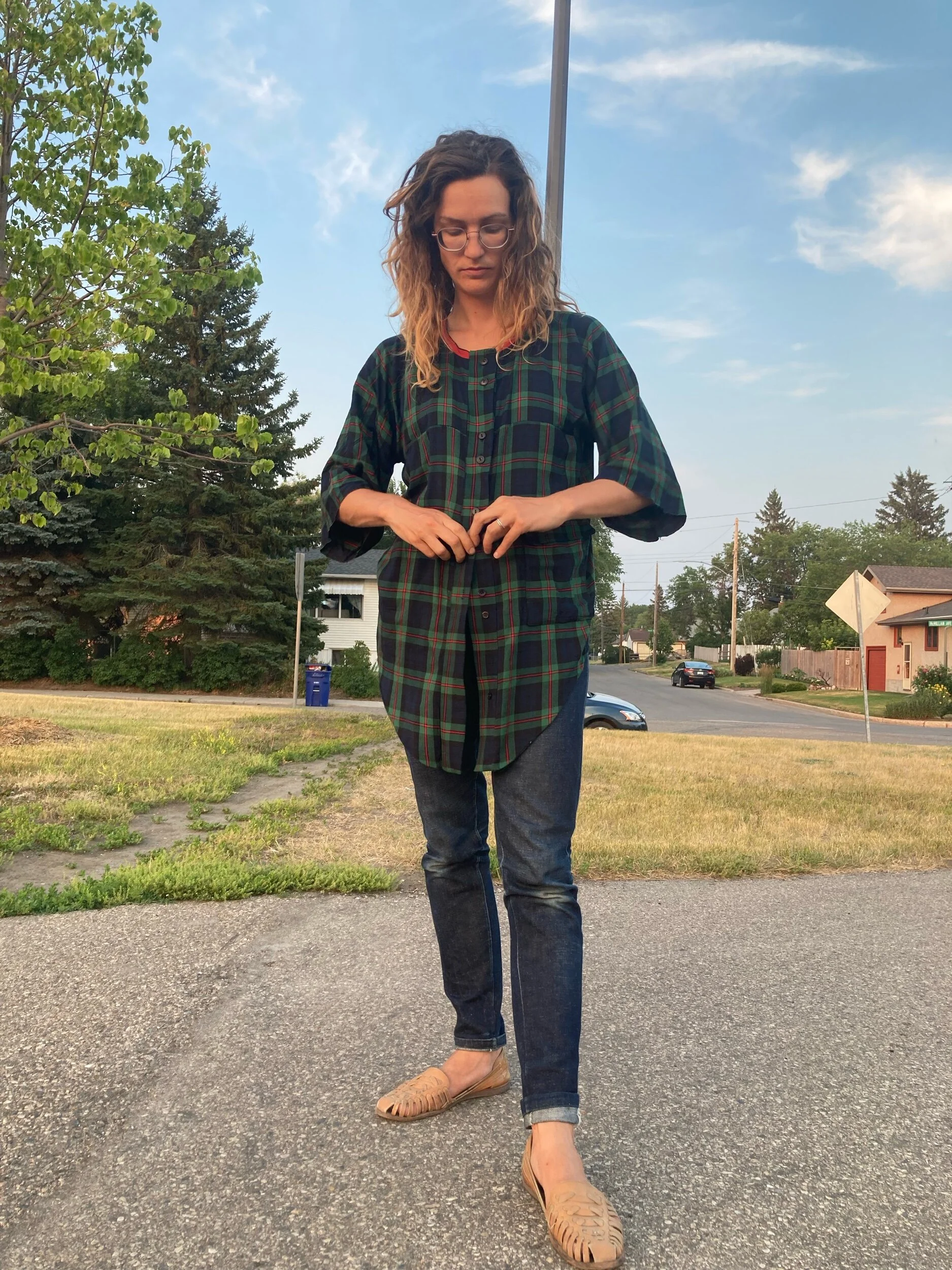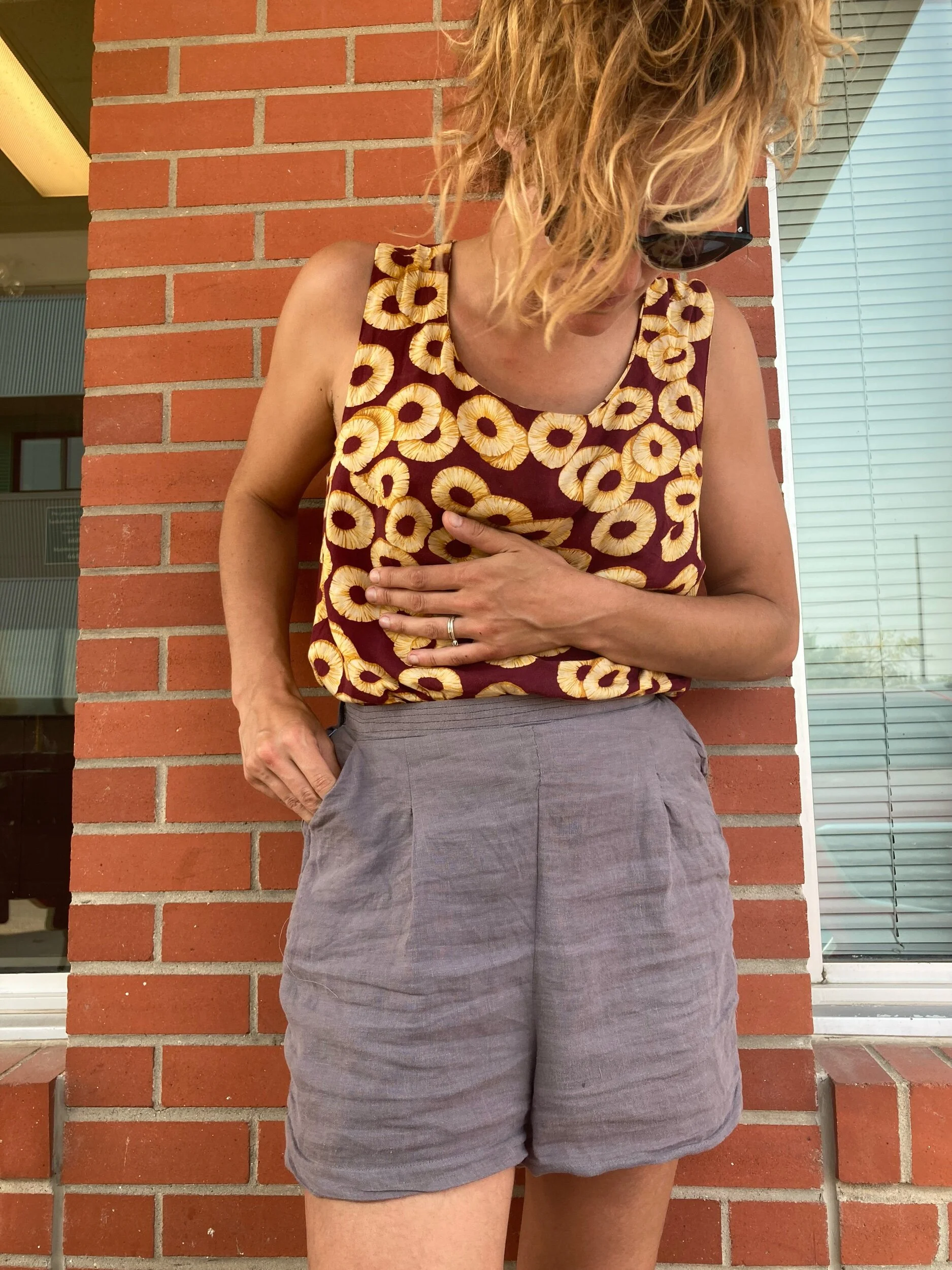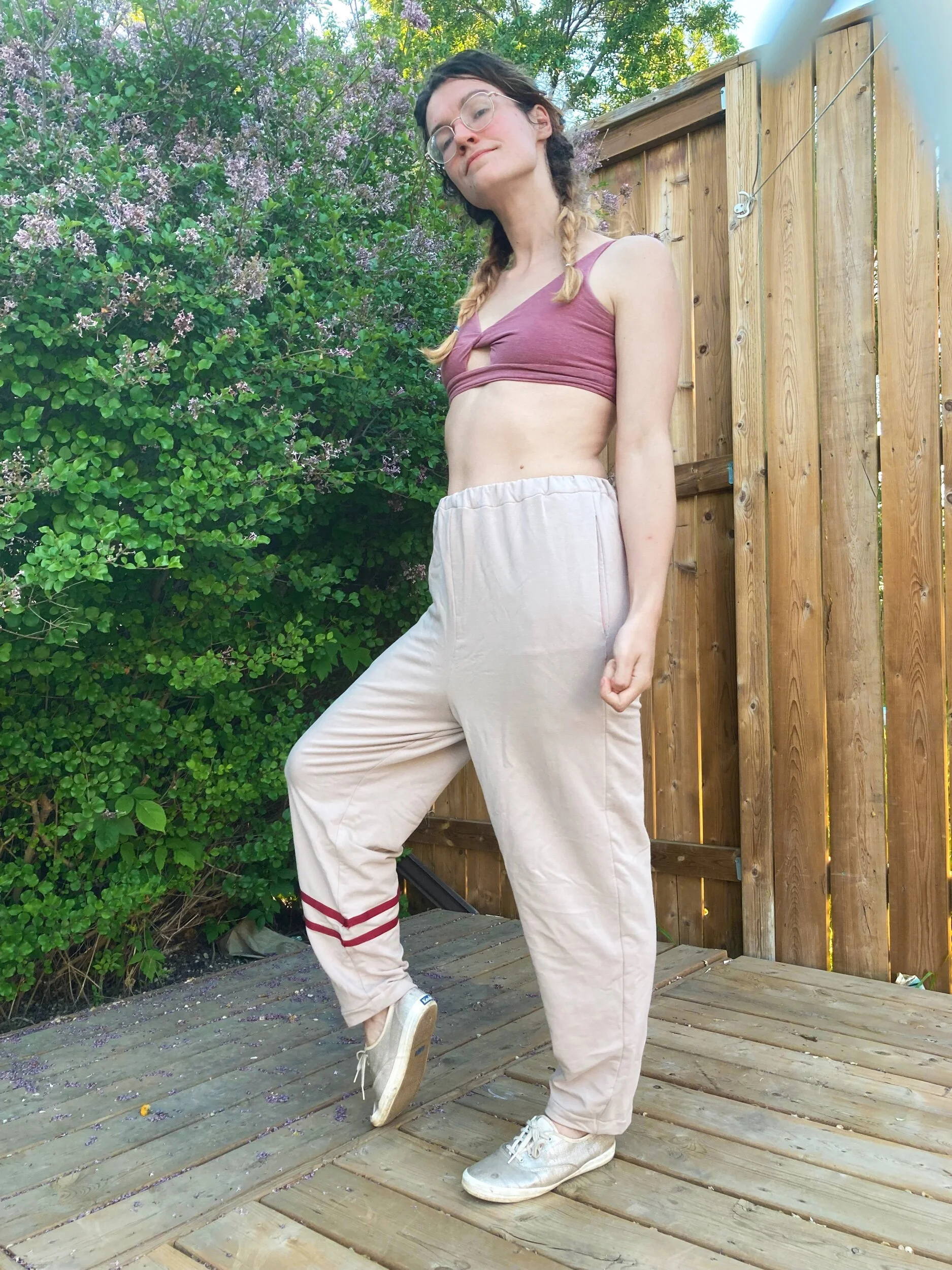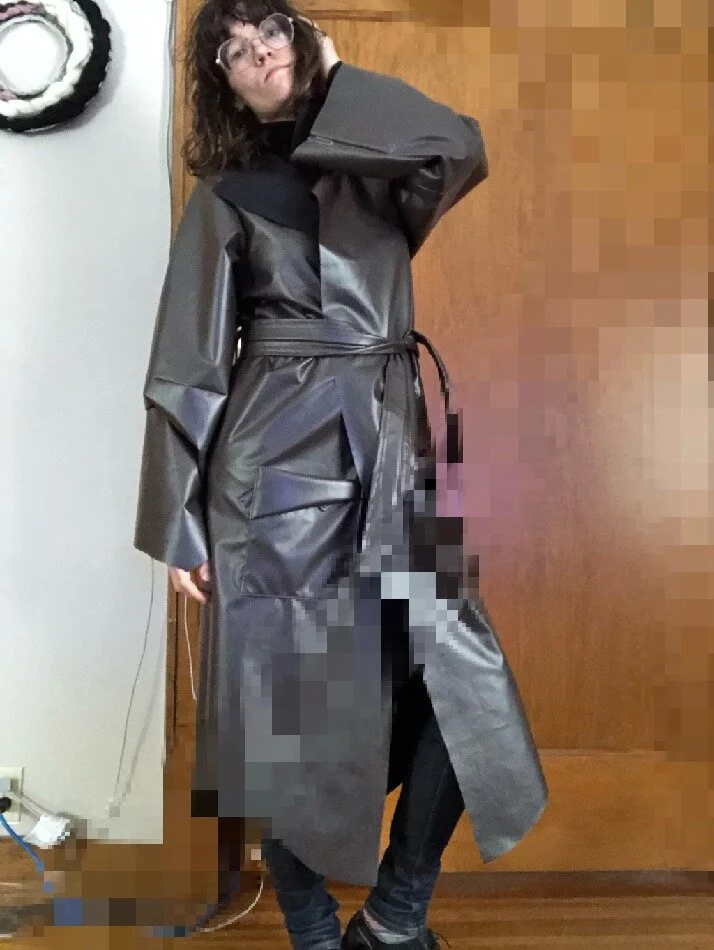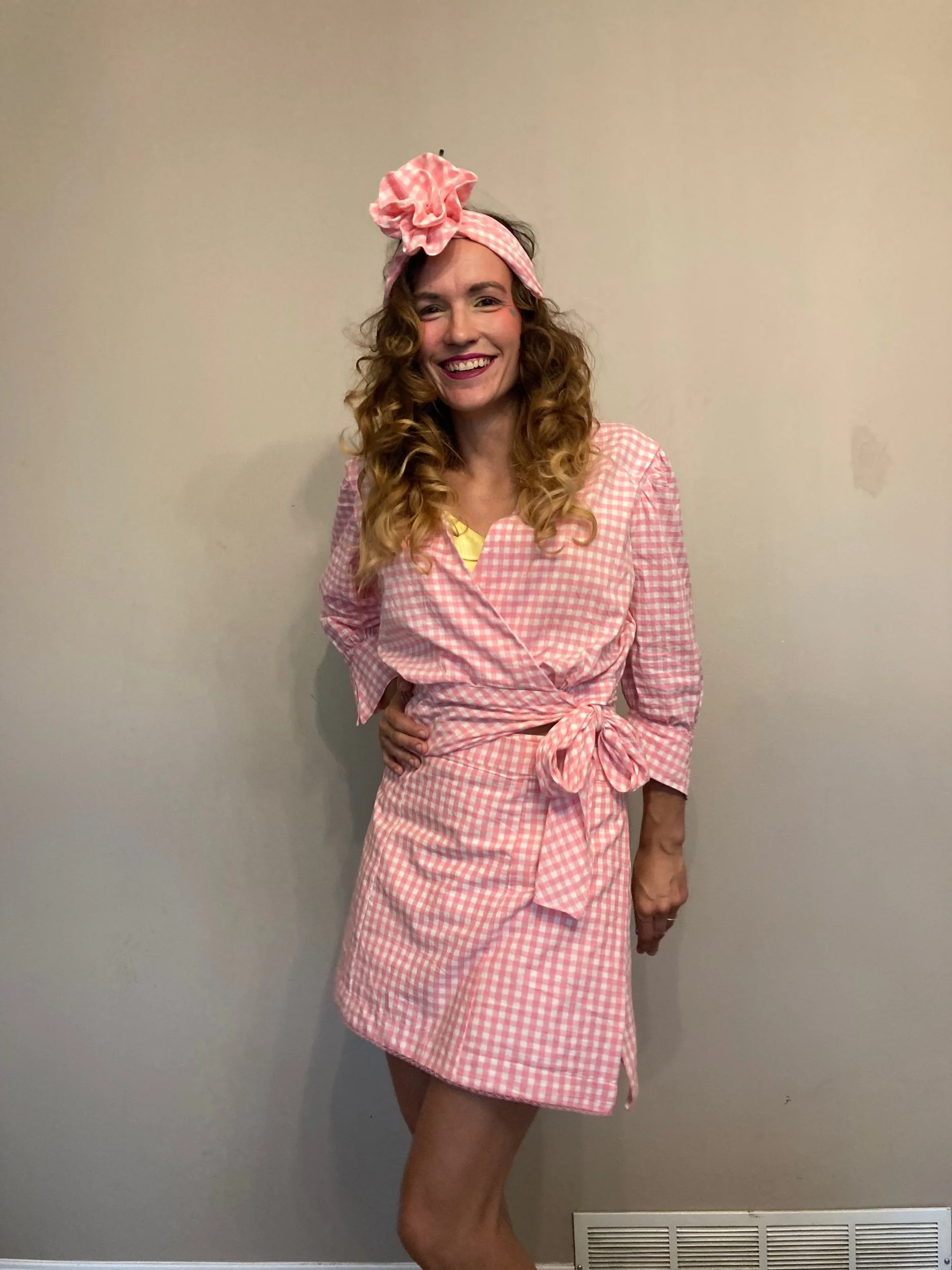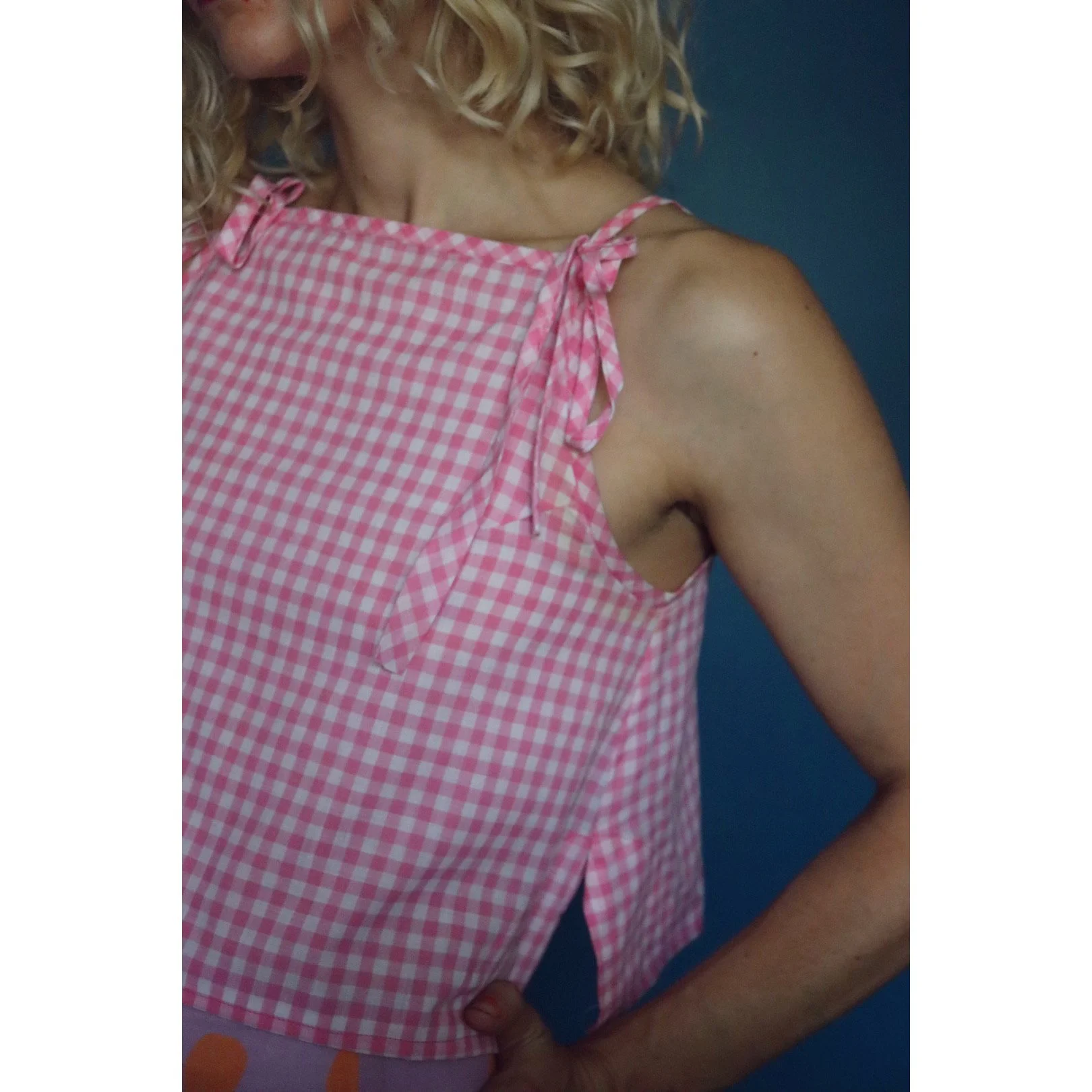Liz Haywood’s zero waste one seam dress
This shirt languished for a long while because I had the bad idea of placing pairs of buttons along the front, which after much time, I actually did. Not exactly as the original vision (they’re a bit further spaced apart), but doubled nevertheless. But first, I wrote this blog post as if I didn’t do the double buttons at all, in order to free myself from the idea and convince myself to wrap it up. As follows:
using doubled buttons would have been lovely. But it made me set this otherwise complete shirt on my dress form and run away because I kind of hate the buttonholes my machine makes and doing so many really held little appeal in practice. Uh, so I bit the bullet and did a more standard button arrangement and didn’t save that many buttons but definitely some.
Like most of my zero waste projects, this one was borne out of the fabric - I’m more drawn to zero waste when I have limited fabric to use up, whereas when there’s a long length to work with I tend to feel like I will just end up with fabric leftover anyhow, which yes, will be a highly adaptable rectangle if I go zero waste, but still leftover to plan for. I think my interest in pattern drafts cuts a few ways - zero waste is a major interest, but vintage patterns and designer originals typically think so differently through design and construction that I can’t help but be enamoured of them too.
just being happy about my fit
All of which to say that I got this length of fabric for a song at Nefelibata, and it seemed to lend itself obviously to a shirt sort of design, and it presented the absolutely perfect opportunity to try my first design from Liz Haywood’s Zero Waste Sewing Book! About time too, I special-ordered it from our local bookstore Mcnally Robinson and the costs incurred on shipping etc were nonzero. I suspect getting it from Make it Sew in the US would have been more cost-effective (and at the very least faster), since they stock it by default, but who knows.
standing with hand in pocket of shirt
I started this one in the midst of other projects, one of those “but now this!” moments, and it went along super fast until the buttons. As you can see along the CF, this is partially because mistakes were went along with (I had so beautifully lined up my red plaid lines at the left side of the shirt and center band, then totally let it droop on the right), as one does, and partially because these sorts of designs, with one seam, draw the pattern on the fabric and cut direct design, move fast as a rule.
I made the length what the fabric allowed, drew in the neckline copying from another shirt, and interfaced the front band. Sleeves are cut on selvedge so no hems there, wooooo.
back of shirt, in the half tuck front arrangement.
Liz calls for semi-stiff fabric on this one so you don’t get a nighty effect, and true to form with this very drapey stuff, I didn’t love the finished length. So I drafted a symmetrical curve for the hem, the offcut of which acts as a facing. However, as you can see below, I made one dumb mistake on this front - I should have shifted my curve up like 1/2” so it would all exist in one. As it stands, the top bits of the curves are unfaced, so when I hand-tacked the facings up (quite invisibly tbh), I also hand-rolled the unfinished bit of hem.
hem facing as drafted
The shape could be better along the hem, but I’m not mad about it either. Next time a more shallow hem curve will be more elegant.
Other than the front seamline mismatch, the other notable mistake is that I pulled a classic sew a bit inside out. That bit was the red bias binding along the top, which was supposed to be inside. I decided it wasn’t worth re-doing, so we get a nice lil contrast neckline moment. The bias binding actually continues the full length underneath the front placket, but I liked the CF double contrast better than an unbroken red line. The other upshot of this is that the neckhole circle which got sewn down on the interior and would have acted as a home for a tag is now on the exterior, reallly acting as a “this is zero waste” signaller (if subtle and frequently hidden by my hair…).
love an unhemmed sleeve moment
Last up, I wasn’t feeling epaulettes, so I decided on a lined flap patch pocket.
left larger pocket piece created, right pocket flap prepared
To create the pocket, I:
Sewed the chunks of leftover band together together, then cut off the interfaced edge of one leftover placket. (My interfacing didn’t go the full length of either of the bands, bc I just used the length I had and didn’t want to piece, knowing it would get cut off anyway)
I then folded each piece in half lengthwise (right sides facing) and sewed the raw edges with a scant seam allowance, leaving space to turn
Turned the pieces right side out and topstitched
Determined placement (could have been done earlier, but wanted to see actual finished sizes) and interfaced behind these spots on the shirt
Attached the pocket then the flap to the shirt.
pocket size once folded in half and sewn
All these little modifications feel very part and parcel of the zero waste design approach, since everyone’s fabric is a little different and there is ultimately the one mandate - to make it zero waste. I mean, sometimes I end up going “minimal waste” instead, and sometimes you can just follow a pattern exactly as written, but unlike traditional design where the mandate is more towards “excellent fit” or “quick and easy” or no mandate at all, that zero-waste goal always sits there, challenging you to adapt as you work, making design elements work for you in line with the restriction. It’s what makes it so fascinating.
I really like wearing this shirt half tucked despite the length, and it also makes an excellent light duster layer unbuttoned. Obviously untucked is a thing too, but because of my deep curve at the bottom it's my least fav. Still comfy and the facing makes it flow nicely in movement tho.
duster style zero waste one seam shirt , worn by woman standing on one foot
Pattern: One Seam Simple Dress (pg 58) from Liz Haywood’s Zero Waste Sewing Book, modified
Size Made: mine?
Fabric: acrylic(- burn test guess?) remnant from Nefelibata, full length used
Next time: the curve should be less deep (visually check before committing), the curve should not meet the bottom edge in order to create a better facing.
Worn with: Philippa pants in popcorn denim, huaraches from Nisolo
zero waste one seam shirt worn, half tucked, woman swinging hair in front of face
